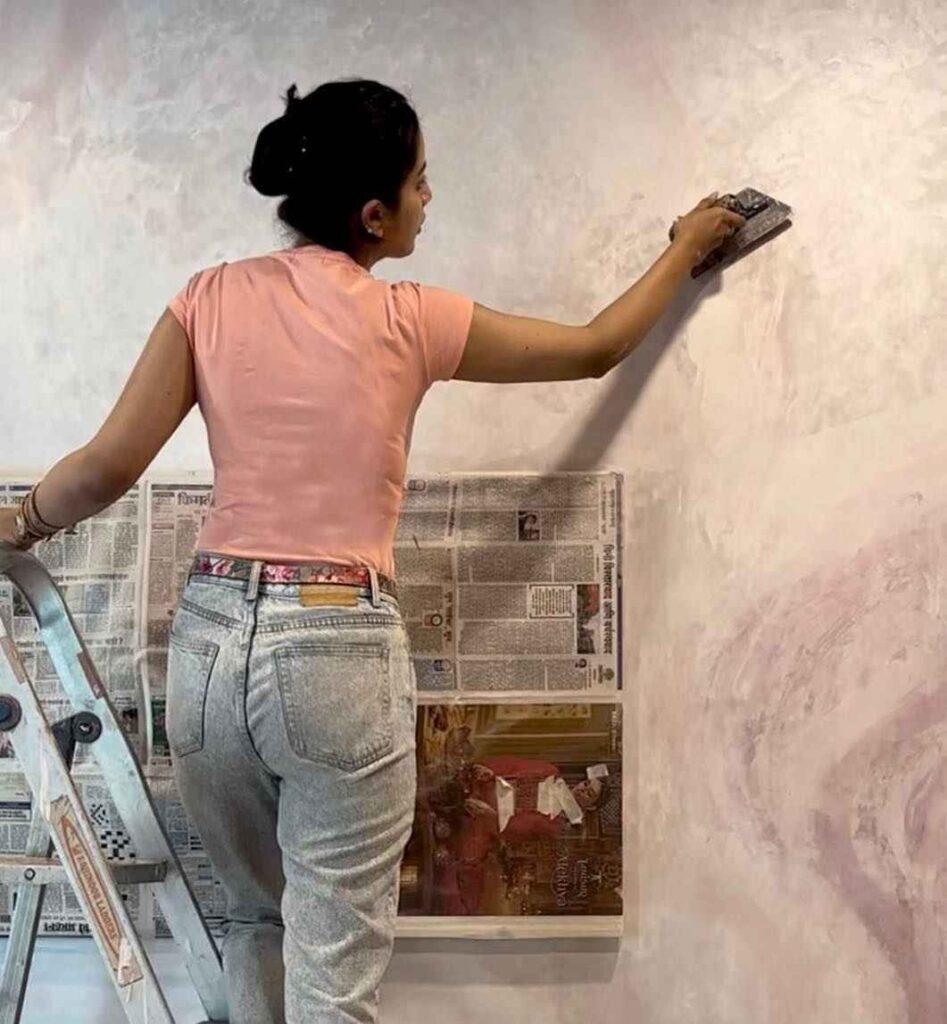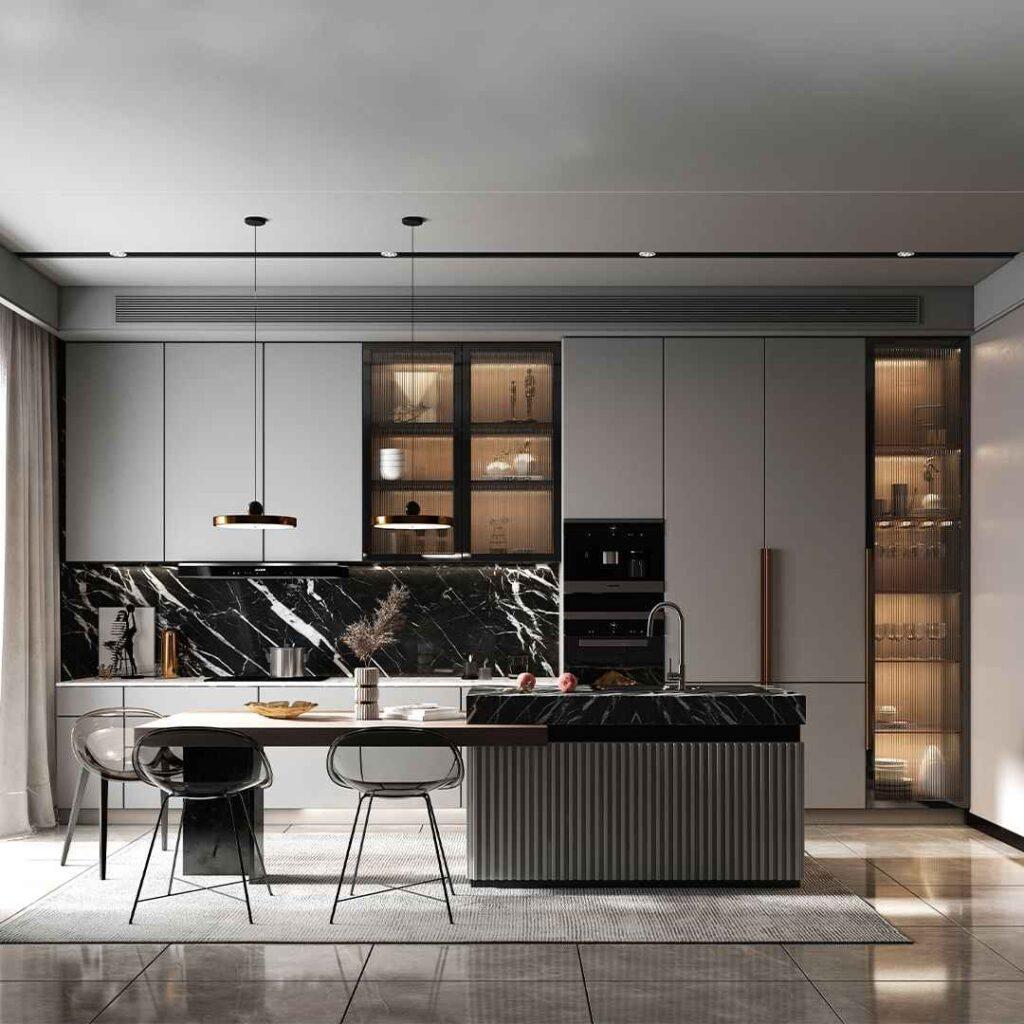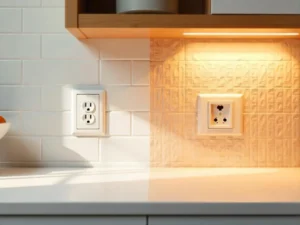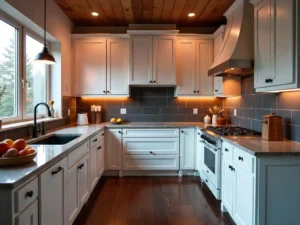Home How to Hide Outlets in Backsplash? Expert Guide for Homeowners You can hide outlets...
Read MoreMarble Texture Magic: How to Create Illusions with Patterns and Colors
Marble texture has been a timeless classic in the world of interior design for centuries. This elegant and luxurious material adds sophistication to any space, making it a popular choice for homeowners and interior designers alike. From kitchen countertops to bathroom tiles, the versatility of marble texture is undeniable.
Table of Contents
ToggleMarble is a type of metamorphic rock that is formed from limestone. It is typically composed of calcium carbonate and other minerals that give it its distinctive colors and patterns. Marble is found all over the world, but some of the most famous marble quarries are located in Italy, Greece, and Turkey.
The purpose of this article is to provide readers with a comprehensive guide to creating realistic marble textures using a variety of colors, including black, white, grey, and brown. We will also cover techniques for creating seamless and high resolution textures, as well as tips for using marble textures in different design applications.
Whether you’re a interior designer, this article will provide you with the tools and knowledge you need to incorporate marble texture into your designs. Contact SF Marble Flooring & Granite countertops if you want to make your house appear classy.
Black Marble Texture

Black marble texture is a stunning and versatile design element that can add depth and sophistication to any project.
Here are some key characteristics and techniques for creating a realistic black marble texture:
- Characteristics: Black marble texture is characterized by its dark color and unique patterns, which can range from simple veins to intricate swirls and knots. It is a popular choice for creating a modern and sleek look.
- Creating Realistic Texture: Start with a base color of black or dark grey, and use a brush tool to add lighter and darker tones to create the veining and pattern of the marble. Use a noise filter to add depth and create a more realistic texture. You can also use a photograph of real black marble as a reference to recreate the texture using digital tools.
- Applications in Design: Black marble can be used in a variety of design applications, such as interior design for flooring, countertops, and backsplashes. It can also be used in graphic design and web design to create a unique and eye-catching visual.
- Tips for Designing with Black Marble Texture: Use black marble in moderation and balance it with other design elements. Pair it with metallic accents, such as gold or silver, to create a luxurious and elegant look.
Overall, black marble texture is a powerful design element that can add impact and sophistication to your projects. With these techniques and tips, you can create stunning visuals that will capture attention and leave a lasting impression.
White Marble Texture

White marble texture is a beautiful and elegant design element that can elevate any project. Here are some key points to consider:
- White marble texture is characterized by its light color and subtle veining, making it a timeless and classic option.
- To create a realistic white marble texture, use a base color of white or off-white and add soft, subtle veins in shades of grey or light brown using a brush tool. Filters like noise or grain can also add texture.
- White marble texture is versatile and can be used in a variety of applications, such as interior design, graphic design, and web design.
- When using white marble texture, it’s important to balance it with other design elements to avoid overpowering the overall aesthetic. Pairing it with darker colors or bold patterns can create a more dynamic design.
- White marble texture is a timeless design element that will never go out of style, making it a great investment for any project.
By incorporating it into your designs with care, you can create stunning and impactful visuals that will leave a lasting impression. Contact with us at SF Marble & Granite if you want to make your home appear elegant.
Marble Texture Seamless
Seamless textures are design elements that can be repeated infinitely without any visible seams or edges. These textures are a popular choice in web design, graphic design, and 3D modeling due to their versatility and ease of use. They can be scaled and repeated without any loss of quality, making them highly desirable for creating realistic and immersive visuals.
When it comes to using seamless marble texture in design, there are many applications. In interior design, seamless marble textures can be used for wallpaper, flooring, and tiles to create a seamless and cohesive look.
When using seamless marble texture in design, it’s important to consider the scale and proportion of the texture.
A larger texture may be more appropriate for larger design elements, while a smaller texture may work better for more subtle accents. Additionally, you can play with the color and saturation of the texture to create different effects and moods in your design.
Seamless marble textures are a powerful design element that offers versatility, ease of use, and endless possibilities. By using the right techniques and incorporating them into your designs with care, you can create stunning visuals that are both seamless and impactful.
Points to be noted about Marble Textures Seamless:
- Seamless textures can be repeated infinitely without visible seams or edges
- They are versatile and can be used in web design, graphic design, and 3D modeling
- Marble textures can be created by using a seamless texture tool, cropping a larger texture, or using a texture generator
- They can be used for wallpaper, flooring, tiles, or as a background element in design
- Scale and proportion should be considered when using marble textures in design
- Color and saturation can be adjusted to create different effects and moods in your design.
Grey Marble Texture
Grey marble texture is a highly sought-after design element due to its elegant and sophisticated appearance.
Here are some characteristics of grey marble texture:
- Neutral color: Grey marble texture has a neutral color that pairs well with a variety of other design elements.
- Subtle veins: Grey marble texture typically has subtle veins in shades of white or light grey that add depth and texture to the design.
- Varied patterns: Grey marble texture can range from fine patterns to bold, dramatic patterns, depending on the type of marble.
To create a realistic grey marble texture, you can use digital tools to recreate the texture or use a photograph of real grey marble as a reference. Here are some techniques for creating a realistic grey marble texture:
- Use a base color of grey or charcoal
- Add soft, subtle veins using a brush tool in shades of white or light grey
- Add texture using filters like noise or grain
When using grey marble texture in design, it’s important to balance it with other design elements and use it selectively.
Here are some tips for using grey marble texture in design:
- Use grey marble texture as a background element for minimalist and elegant designs
- Pair grey marble texture with other natural elements like wood or greenery
- Use grey marble texture selectively to avoid overwhelming the design
Overall, grey marble texture is a versatile and timeless design element that can add sophistication and depth to a variety of applications.
When using seamless marble texture in design, it’s important to consider the scale and proportion of the texture. A larger texture may be more appropriate for larger design elements, while a smaller texture may work better for more subtle accents.
Additionally, you can play with the color and saturation of the texture to create different effects and moods in your design.Seamless marble textures are a powerful design element that offers versatility, ease of use, and endless possibilities.
By using the right techniques and incorporating them into your designs with care, you can create stunning visuals that are both seamless and impactful.
Points to be noted about Marble Textures Seamless:
- Seamless textures can be repeated infinitely without visible seams or edges
- They are versatile and can be used in web design, graphic design, and 3D modeling
- Marble textures can be created by using a seamless texture tool, cropping a larger texture, or using a texture generator
- They can be used for wallpaper, flooring, tiles, or as a background element in design
- Scale and proportion should be considered when using marble textures in design
- Color and saturation can be adjusted to create different effects and moods in your design.
Brown Marble Texture
Brown marble texture is a warm and inviting design element that can add richness and depth to a variety of projects.
Here are some characteristics of brown marble texture:
- Warm tones: Brown marble texture has warm, earthy tones that can create a cozy and inviting atmosphere in a design.
- Unique patterns: Brown marble texture can range from subtle and refined to bold and dramatic, with intricate veins and patterns that add texture and interest to a design.
- Natural feel: Brown marble texture has a natural and organic feel that can evoke a sense of warmth and comfort.
To create a realistic brown marble texture, you can use digital tools to recreate the texture or use a photograph of real brown marble as a reference.
Here are some techniques for creating a realistic brown marble texture:
- Use a base color of warm brown or chocolate
- Add subtle veins and patterns using a brush tool in shades of white or lighter brown
- Use filters like noise or grain to add texture and depth
When using brown marble texture in design, it’s important to balance it with other design elements and use it selectively.
Here are some tips for using brown marble texture in design:
- Pair brown marble texture with neutral colors like beige, white or black for an elegant look.
- Use brown marble texture as a background element for a warm and inviting design.
- Use brown marble texture as an accent element in a design to add interest and texture.
Overall, brown marble texture is a versatile and natural design element that can add warmth and richness to a variety of applications. With a little creativity and skill, you can use brown marble texture to create beautiful and inviting designs that will captivate your audience.
Marble Texture High Resolution
Marble Texture High Resolution Explanation of high resolution textures and their benefits Techniques for creating a high resolution marble texture Tips for using high resolution marble texture in design
High resolution textures offer several benefits for designers, including greater clarity, detail, and flexibility. With a high resolution marble texture, you can achieve a more realistic and nuanced design, whether you’re working on a print or digital project.
Here are some techniques for creating a high resolution marble texture:
- Use a high quality photograph of real marble as a reference to recreate the texture using digital tools.
- Create a texture map by taking multiple photographs of the marble from different angles and stitching them together to create a more complete texture.
- Use a high resolution scanner to capture a physical sample of the marble and convert it into a digital texture.
When using high resolution marble texture in design, there are several tips to keep in mind to ensure the best results:
- Make sure the texture is scaled correctly for the project to avoid distortion or pixelation.
- Adjust the brightness and contrast to achieve the desired effect.
- Experiment with different layering techniques and blending modes to achieve a more natural look.
High resolution marble texture is particularly useful in applications where the texture will be viewed up close, such as in print projects or high definition digital images. When used properly, high resolution marble texture can create a striking and realistic effect that enhances the overall design.
Conclusion
Marble texture is a versatile and beautiful design element that can add richness and depth to a variety of projects. Whether you’re working with black, white, grey, brown or high resolution marble textures, there are many techniques you can use to create a realistic and captivating design.
From creating seamless textures to using marble textures as accent elements, there are endless possibilities for incorporating marble texture into your designs.
Marble texture is a timeless design element that has been used for centuries, and its popularity shows no signs of fading. With its natural feel and unique patterns, marble texture can add elegance, warmth and sophistication to any project.
FAQs
Marble texture refers to the appearance of marble, which is a natural stone with a unique veining pattern that can be replicated in design.
A marble texture can be created by using digital tools such as Photoshop to mimic the natural patterns found in marble. A photograph of real marble can also be used as a reference to create a more realistic texture.
Marble texture can be used in a variety of design applications, such as interior design for flooring, countertops, and walls, graphic design as a background element or to add texture to illustrations, and web design to create a modern and clean look.
Marble texture can add elegance and sophistication to a design, as well as create a sense of texture and depth. It is a timeless design element that can work in a variety of styles and aesthetics.
To prevent the marble texture from overpowering the design, it is important to balance it with other design elements such as color and pattern. For example, pairing white marble with darker colors or bold patterns can create a dynamic and visually appealing design.
Our Services
Contact Us
- 755 Dutton St. Lowell-MA 01854
- Phone: 978-459-5823
- FAX: 978 459 5827
- smgranite@hotmail.com
Our Blogs
The Guide to Choosing the Perfect Backsplash Color for White Cabinets
Home The Guide to Choosing the Perfect Backsplash Color for White Cabinets White cabinets have...
Read MoreRainforest Brown Marble: Nature’s Masterpiece for Timeless Interiors
Home Rainforest Brown Marble: Nature’s Masterpiece for Timeless Interiors Rainforest Brown Marble is a breathtaking...
Read More


